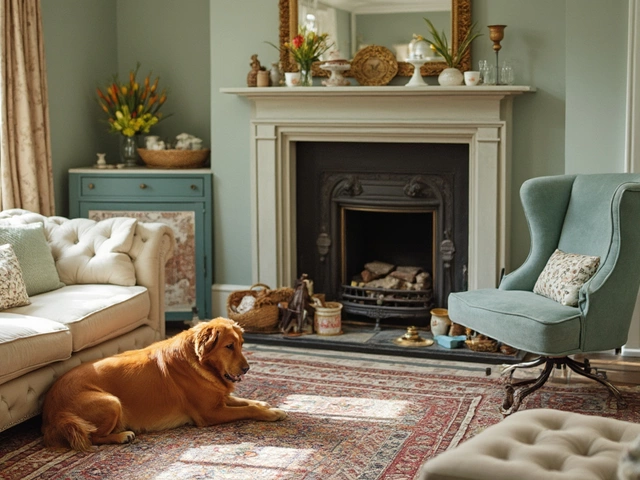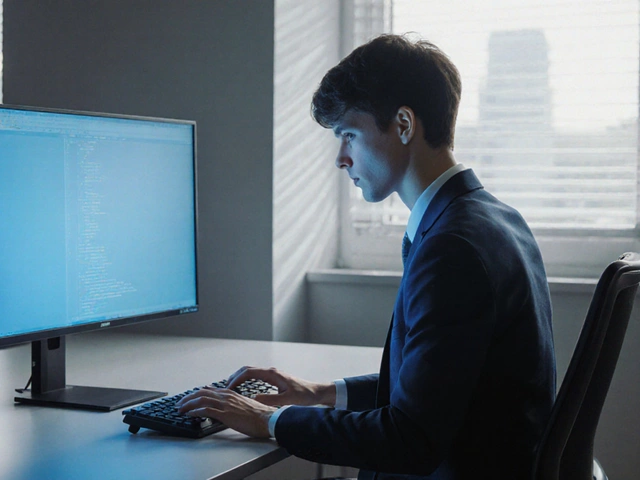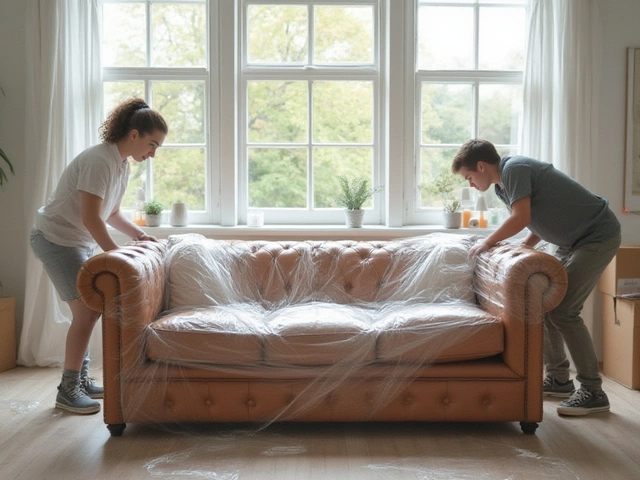 16
Nov,2025
16
Nov,2025
TV Placement Calculator
Find the perfect TV position for your couch. This calculator helps you align your TV with the center of your seating area for maximum comfort and viewing enjoyment.
Ever sat down on your couch, squinted sideways at the TV, and thought, Why does this feel so awkward? You’re not alone. Most people mount their TV right in the middle of the wall-because it looks balanced. But here’s the truth: your couch matters more than your wall.
The Wall Isn’t the Boss
A lot of people think the TV should be centered on the wall because it’s symmetric. It looks clean in photos. It’s what you see in magazines. But real life doesn’t care about symmetry. If your couch is off to the side because of a window, a fireplace, or just the way your room flows, forcing the TV to match the wall center makes you twist your neck every time you want to watch something.Think about it: you spend hours on that couch. Maybe you read, nap, scroll, or eat snacks while watching. If your TV’s off-axis, you’re not just watching a show-you’re doing neck stretches. That’s not design. That’s discomfort disguised as aesthetics.
Center the TV on the Couch, Not the Wall
The right way? Align your TV with the main seating area. That means measuring from the center of your couch-not the wall. Stand in front of your couch. Find the spot directly in front of your eyes when you’re sitting comfortably. That’s where your TV should be.This works because your eyes naturally follow the direction you’re facing. When you sit down, your gaze lands on the center of the couch. If the TV is aligned there, your head stays neutral. No tilting. No straining. Just watching.
Try this simple test: Sit on your couch. Close your eyes. Now open them and look straight ahead. Where does your gaze land? That’s your TV’s true center. Mark it with a piece of tape on the wall. Now step back and look at the wall. Is it perfectly centered? Maybe not. And that’s okay.
What About the Coffee Table?
You mentioned coffee tables. Good. Because the coffee table is part of the equation. It’s not just about the TV and couch-it’s about the whole zone.When you center the TV on the couch, you also create a natural visual flow between the seating area and the table. The coffee table becomes the anchor of your viewing zone. If your TV is crooked relative to the couch, the coffee table looks off too. Everything feels disconnected.
Imagine this: you’ve got a sleek, low coffee table in front of your couch. The TV is centered on the wall, but the couch is pushed slightly to the right. Now the coffee table is angled, the TV feels like it’s floating in the wrong space, and your whole living room looks like it’s fighting itself. It’s not a design flaw-it’s a misalignment.
Fix it by aligning the TV with the couch. Suddenly, the coffee table sits right in front of you, centered under the screen. Your eyes move naturally from the screen to the table to the people across from you. Everything feels connected. That’s the magic.
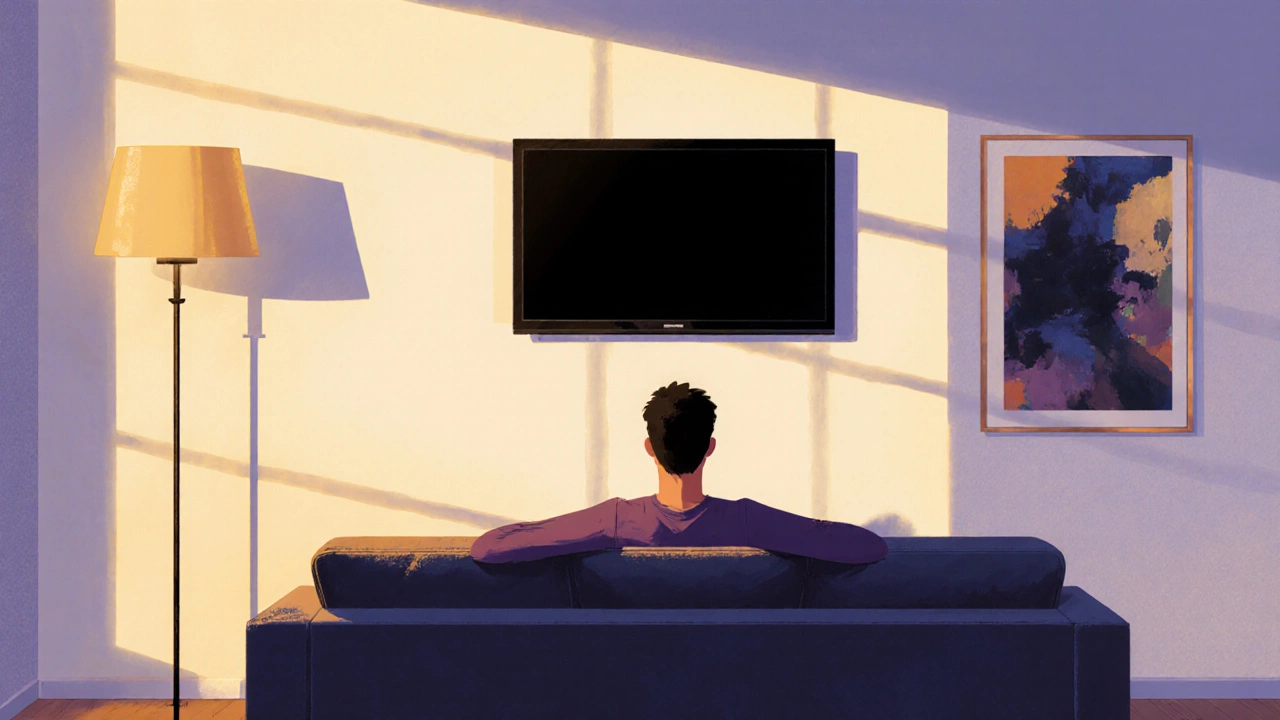
Mounting Height Matters Too
Centering the TV horizontally is only half the battle. Vertical placement is just as important.If your TV is too high, you’re looking up. Too low, and you’re looking down. Both strain your neck. The sweet spot? The center of the screen should be at eye level when you’re sitting normally. For most people, that’s about 40 to 45 inches off the floor.
Measure from the floor to your eyes while seated. That’s your target. Don’t just guess. Use a tape measure. It takes 30 seconds. It saves you years of neck pain.
And if you’re using a TV stand? Make sure it’s stable. A wobbly stand looks cheap and feels unsafe. A wall mount gives you precise control. But if you go with a stand, make sure it’s wide enough to support your TV and doesn’t block vents. And don’t let it get lost under the coffee table-leave at least 6 inches of space in front for airflow and cleaning.
What If My Couch Isn’t Centered?
You’re not stuck. Life isn’t perfect. Maybe your fireplace is on the left. Maybe you’ve got a big window on the right. Maybe your room’s L-shaped.That’s fine. You don’t have to move the couch. You just have to accept that the TV won’t be centered on the wall. And that’s not a flaw-it’s smart adaptation.
Try this: If your couch is off-center, mount the TV directly in front of it. Then, balance the room visually with other elements. Put a tall plant or floor lamp on the side where the wall feels empty. Hang a piece of art opposite the TV to create visual weight. Use rugs or side tables to pull the eye back into balance.
People notice asymmetry when it feels random. But when it feels intentional-like you made a choice based on comfort, not just looks-it feels right.
Real-Life Example: Melbourne Living Room
I’ve seen this play out in dozens of homes here in Melbourne. One client had a gorgeous, modern couch facing a big window. The wall behind it was empty. The TV was mounted dead center on the wall-about 2 feet to the right of the couch.Every time they sat down, they had to turn their head 15 degrees. After a few weeks, they started getting headaches. They thought it was screen glare. It wasn’t. It was neck strain.
We moved the TV to align with the couch. The wall looked uneven. But the room felt right. They stopped complaining about headaches. They started watching more. They even invited friends over more often.
It wasn’t about the TV. It was about how they felt when they sat down.
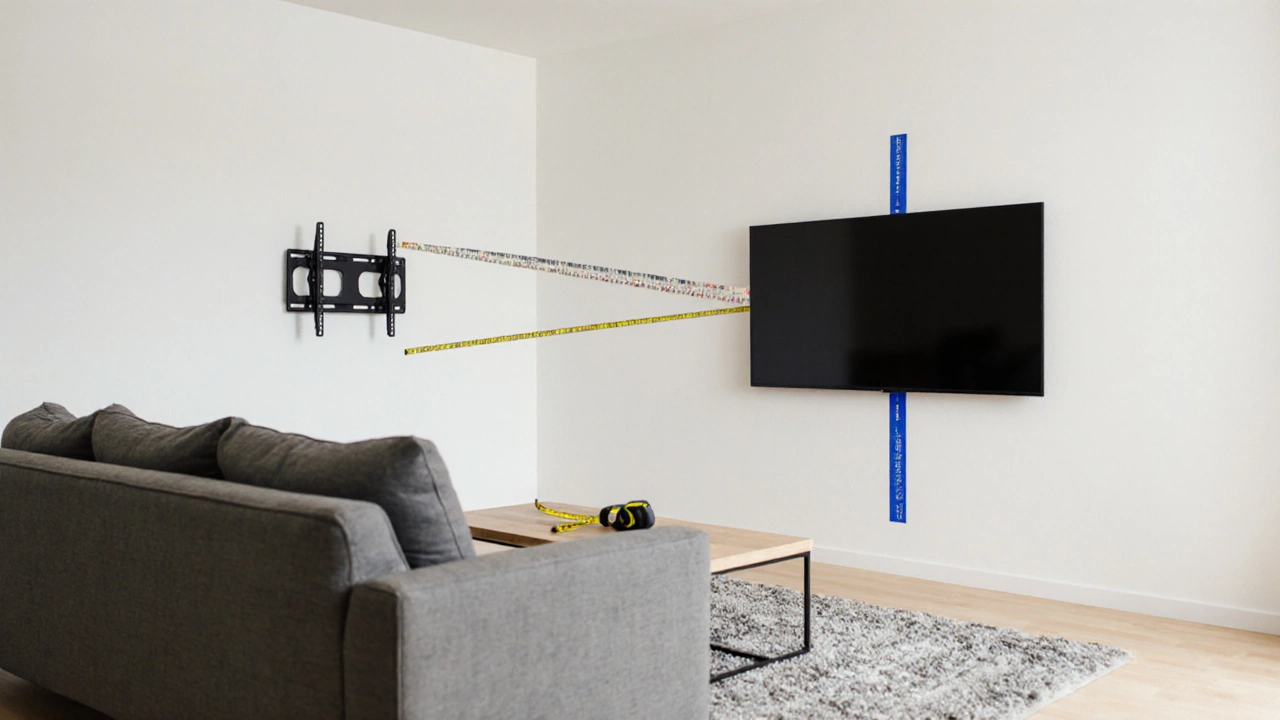
What About Multiple Seating Areas?
If you’ve got two couches facing each other, or a sectional with a chaise, it gets trickier. But the rule still holds: center the TV on the main viewing spot.Usually, that’s the longest, most used seat. If you watch TV mostly while lounging on the chaise, align the TV with that. If you sit on the main section, center it there.
Don’t try to please everyone. Pick the primary viewer. The rest can adjust. You’re not designing a theater. You’re designing a home.
Common Mistakes to Avoid
- Centering the TV on the wall because it looks "balanced"-balance isn’t about symmetry. It’s about comfort.
- Mounting the TV too high-you’re not watching from standing. You’re sitting.
- Ignoring the coffee table-it’s part of the viewing zone. Make sure it doesn’t block the view or feel disconnected.
- Using a TV stand that’s too small-your TV should sit securely. No wobbling. No cables hanging over the edge.
- Forgetting about lighting-if your TV faces a window, glare will ruin your experience. Position it so sunlight doesn’t hit the screen directly.
Final Rule: Watch From Your Couch
The best way to decide? Sit on your couch. Put your TV where you want it. Watch a show. Watch it for 20 minutes. Then 40. Then an hour.Does your neck hurt? Do you feel like you’re leaning? Do you feel like you’re missing part of the screen? Then it’s not right.
TV placement isn’t about design trends. It’s about how you live. You don’t need a perfectly centered TV on a perfectly centered wall. You need a TV that lets you relax, without thinking about it.
Center it on your couch. Not the wall. Your body will thank you.
Should my TV be centered on the wall or aligned with the couch?
Align your TV with the center of your couch, not the wall. The couch is where you sit, so that’s where your eyes naturally look. Centering the TV on the wall might look balanced in photos, but it forces you to twist your neck, leading to discomfort over time.
What height should my TV be mounted at?
The center of the TV screen should be at eye level when you’re sitting on your couch. For most people, that’s about 40 to 45 inches from the floor. Measure your eye height while seated to get the exact spot.
Does the coffee table affect TV placement?
Yes. The coffee table is part of your viewing zone. If the TV is aligned with the couch, the table should sit directly in front of it, creating a natural, balanced flow. A misaligned TV makes the table feel out of place and disrupts the room’s rhythm.
What if my couch isn’t centered in the room?
That’s normal. Don’t move the couch. Move the TV to match it. Then balance the room visually with lighting, plants, or art on the opposite side. Intentional asymmetry looks better than forced symmetry that causes discomfort.
Can I use a TV stand instead of wall mounting?
Yes, but make sure the stand is wide enough to support your TV safely and doesn’t block vents. Keep at least 6 inches of space in front for airflow. A stand gives you flexibility, but a wall mount gives you precise positioning and a cleaner look.

